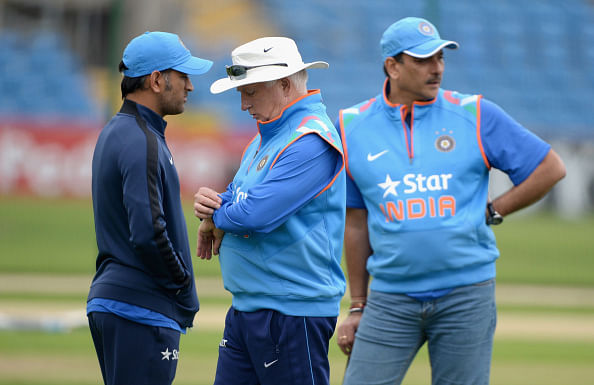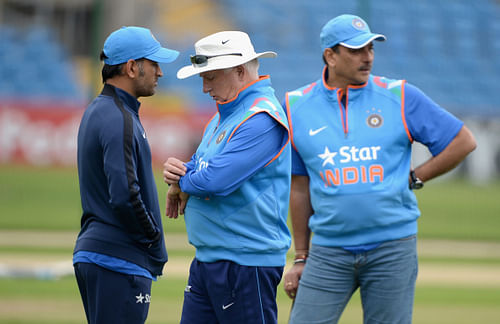
Leadership challenges post the Fab Four era

I found a wonderful definition of Test cricket on Wikipedia. It says that this format is named so because it is a complete examination of the playing ability and endurance of both teams. Two key aspects brought out by those words – ability and endurance, and yet they seem to have lost their meaning in today’s slam-bang versions of the game.
Team India’s ongoing travails in the ultimate arena of cricket, especially in light of the Fab Four’s retirement (from 2008 onwards), have never been so pronounced than in the last couple of years. I do not question their abilities – they are skilled enough to warrant a place in the side, but I will certainly point fingers at their lack of endurance. To put it simply, I am extremely concerned that they haven’t shown the gumption for a fight, have had no patience whatsoever, and have frittered away the chances of a series win. They have forgotten what it is like to grind out a victory, set as they are in pursuit of temporary glory by playing too many shots early. In a Test match, every inch needs to be earned through sweat; the young ones, though, have completely misjudged the true purpose of playing at this level.
This brings a fresh set of challenges for the leaders: team director Ravi Shastri, captain MS Dhoni and head coach Duncan Fletcher. The first-named can help encourage, motivate and push. But it is up to the other two to knock some good common horse sense into the squad. Ahead of the gruelling Australia tour, they have to find the answers fast.
Let’s take a look at some of the challenges they face:
Unlearning, Learning and Re-learning the basics of Test cricket
Okay, so I took the sub-heading from my alma mater’s motto. But it does make sense in this context. In simple terms, the team has forgotten how to play five-day cricket. Gutless, spineless, tame: these adjectives, though hurtful, seem to describe their current mindset towards the white-flannel version.
It is time for Fletcher to make them go back to the basics. Unlearning everything they think they know about their game is the first step. It’ll help them identify the flaws in their armour, and perhaps a few re-adjustments.
Then comes learning: about the nuances of approaching a Test match, the finer points of getting settled at the crease before unfurling all sorts of strokes, and plugging away at the opposition for wickets. The final portion – re-learning – is about putting the experience acquired on overseas pitches to good use for future tours, or even at the domestic level. Definitely worth a try, I’d say.
Fresh ideas, newer strategies and perfect execution
With all due respect to the skipper, I do not believe that he has got anything new to try out in the gruelling, rough battleground of Test matches. The tried-and-tested formula has given way to the tired-and-not-so-fresh, ragged set of cricketers who looked like going through the motions without appearing the slightest bit interested (with a few notable exceptions, of course) in the proceedings.
I do realize that innovations do not happen at the drop of a hat. But it wouldn’t hurt to make some changes to the batting order, such as having two left-handers open or having spinners share the new ball. Sometimes, it may not be bad to try a few moves you have used in limited-overs cricket.
Now comes the hard part: executing the plans. For this, the captain has to make each member aware of his role. He needs to instil confidence in his young side and challenge them to do their best. And he needs to stick to his plans if he wants the execution done right. It doesn’t make sense to have no fielder in the deep when Ishant Sharma prepares to deliver a short-pitched ball, for instance. If you just don’t use the right tools for the job, why even do the job?
Freshness, Innovation and Execution: it’s another challenge for Dhoni and Duncan, which needs to be addressed quickly.
Fearlessness and the art of having fun on the job
I saw a lot of fear in the eyes of the batsmen when they squared off against the likes of James Anderson, Chris Woakes, Chris Jordan and Ben Stokes. Others may disagree, but I believe that the fear of genuine pace and swing is what got most of them into trouble. It made them lose confidence in their own abilities. To make matters worse, they struggled against spin: every single Indian batsman of yesteryears would have cringed at that sight.
Now this is where both the team director and the skipper need to come in. It was Shastri’s call to play khadoos cricket that enabled Suresh Raina to do well in the ODI series against England. So, why not let the likes of Cheteshwar Pujara and Virat Kohli have the same advice? Let them play without fear after they get their eye in; they don’t have to use attack as the best form of defence every time.
Also, every member must enjoy their game. Having fun on the job keeps you relaxed and devoid of stress and enables you to focus better. The rigour of a four-match or five-match Test series often gets to you as I saw in the way Bhuvneshwar Kumar bowled towards the end of the ill-fated final Test. In such cases, it’s better to switch off for a few minutes at the end of each spell. Dhoni has at least done this right: he’s had his quicks bowl for short spells, but it has to be interspersed with adequate rests in between. Endurance training should be a part of nets sessions that the team participates in so that everyone remains fresh for the long haul.
Summary
Tough times and decisions await Team India prior to the crucial Australian tour. I would recommend blooding a few youngsters who have played well in the domestic seasons and on ‘A’ tours. It will be a true test of character for them, and it will tie in nicely with the need for fresh, enthusiastic performers. Till then, it’s the policy of wait-and-watch that I will adopt.